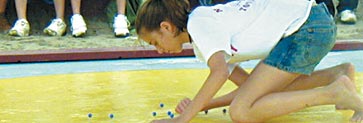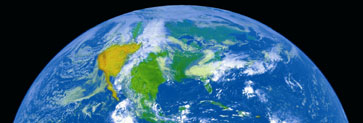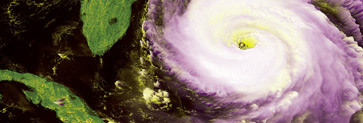
By Jack Shue
To fill the need for engineers and scientists of the future, we at NASA need to start attracting youths to these fields now. With this goal in mind, Goddard Space Flight Center encourages its employees to find ways to capture the imaginations of our next-generation workforce. A second grader has a different outlook on what is exciting, versus that of a tenth grader, but to capture the imagination of either is important.
I enjoy talking to kids about engineering, particularly applied engineering, and so the question is always on my mind: What makes a person want to be an engineer or scientist? Or, more specifically, what makes someone want to go into engineering or science? Is it a single event?
Several years ago I got an idea, and, as with most ideas, it was not accompanied by a blinding flash of light. The idea came to me at the National Marbles Tournament. To watch a good game of marbles is to watch physics at work. The dedication and effort these players put into their game can be the mark of a good engineer or scientist.
My son had been playing the game of Ringer (a U.S. Marbles Game) for several years, and now he was coaching. In the rulebook for Ringer, one rule states, “The shooter shall be not more than 3/4 inch in diameter and not less than 1/2 inch in diameter. All contestants’ shooters should be checked for size prior to the beginning of the game.”
Several people at this tournament had been using drafting templates as gauges, but the organizers discovered that the templates were too large. Here was an engineering problem, I said to myself — and it was then that the thought crossed my mind: Wouldn’t it be a good way to get the kids’ attention by making some NASA sponsored gauges and handing them out? Even better would be to fly one of them in space.
Now, where do you start once you have an idea? In this case, I started by talking with my colleague Mike Ryschkewitsch from Applied Engineering and Technology at Goddard while we were in the gym one morning. As fate would have it, the conversation took place while my son was at the 79th annual tournament. I suggested that it would be fun to make a gauge and get it flown in celebration of the 80th anniversary of the tournament. Mike seemed to enjoy the idea and suggested I write up a brief proposal so that he could give it to the Public Affairs Office for review.
Needless to say, there were the usual jokes about losing one’s marbles, but the idea was well received; and to prove that I knew where my marbles were, I produced out of my pocket some marbles and gave one to each person who attended the kickoff meeting to produce gauges for the tournament.
With permission given to run the project, Mike came up with the money needed to fabricate the gauges, and in addition came up with the idea to have the gauges calibrated by the National Institute of Standards and Technology (NIST). The Goddard mechanical branch was given the task of designing and manufacturing a gauge large enough to include two holes and the NASA and NIST logos. By using a computer-driven mill they were able to scribe in the logos, as well as the name of the tournament and the words “GO” and “NO GO” under the two holes.
I had originally asked for one gauge, but once word of this project got out, the presentation list was up to 43 gauges for the tournament participants. The Public Affairs Office suggested manufacturing another 20 to 30 gauges.
The gauges were taken to NIST for calibration, and for a finishing touch they brought out a 3/4 inch gauge marble that had its dimension known to 3 millionths of an inch. Much to the shop’s chagrin, the gauge marble did not pass through six of the gauges. This was a lesson to us on how to specify the tolerance for a gauge. The dimensioning should have been 3/4 (0.750) inch +0.005 / -0.000 instead of the +/-0.005 used. NIST was kind enough to have a technician ream open the holes that did not pass the standard.
The 80th anniversary tournament took place at the beginning of June 2003. We had hoped our gauge would catch a ride on the Shuttle, but we had to settle on a balloon flight. The first thing the engineers wanted to know was, what was a marble gauge, how big were they, and how much did they weigh?
These were easy questions to answer, and the response came back that it would not be difficult at all to fly them on one balloon; in fact, they normally fly more duct tape than that! I kept one gauge as a spare “just in case,” as I had heard the story of the balloon gondola that found the only deep lake within 200 miles of the drop zone.
Balloon season starts in May and I needed the gauges back two weeks before the tournament. It is not uncommon for the engineers to wait weeks for the right conditions. The launch took place on May 24 in New Mexico, and it was almost a week before the gauges were returned. They were delivered to me the day before I was to leave for the tournament.
At the start of the project, I had not given much thought as to who would be coming to the tournament. Mark wanted to be there to do his job as Public Affairs Officer, and he asked if I would mind if he invited the Center Director to come. To my amazement the Goddard Center Director, Al Diaz, was enthusiastic about going. At the briefing I gave him, Al got a gauge and some marbles. He requested another gauge so that he could give it to NASA Administrator Sean O’Keefe.
Mark suggested that we should try to get an astronaut to do the honors of presenting the gauges to the tournament finalists, and he put in a request for one. With just a few days to go it was confirmed that we would get an astronaut, Tony Antonelli, and that he would spend the entire day at the tournament.
When we arrived, the tournament had already been under way for three wet days. The day of the finals it rained again, but marbles takes place rain or shine. Tony was there in his blue flight suit, and the rest of us in some form of NASA clothing. Al and Tony were both very good sports about the whole thing, including the rain, and the enthusiasm of the marbles group towards NASA was touching.
Tony gave his speech and did a question-and-answer session with the players, and while they were the questions only kids could ask, it showed that the public does follow what we are doing. After one of the questions, Tony revealed why he had gotten into the astronaut corps. It turns out, he had been fascinated as a kid by watching the Skylab astronauts run in space. I like to imagine that some day I’ll hear an astronaut, engineer, or Nobel laureate telling an audience that it all started for them back at a marbles tournament.
A largely volunteer effort that had required little investment on the Agency’s part had indeed captured the imagination of youth. And there was another, unforeseen payoff, as well — the project had sparked the enthusiasm of a good number of people at NASA and NIST along the way. Watching the presentation of the gauges was the closing of a satisfying, yearlong endeavor for me.
Lessons:
- For NASA to play a leading role in inspiring tomorrow’s scientists and engineers, individuals within the Agency need to recognize outreach as an important activity.
- Good ideas can die on the vine without persistence. Persistence marries intelligence with leadership.
Question:
At what point does individual initiative need to be organized and creativity managed?
Search by lesson to find more on:
- Recruiting









